Beneath Haunted Waters
The Tragic Tale of Two B-24s Lost in the Sierra Nevada Mountains during World War II
Peter Stekel


An imprint of Globe Pequot
Distributed by NATIONAL BOOK NETWORK
Copyright 2017 by Peter Stekel
All photos by the author unless otherwise noted
Maps by Jim Reed, PhD
All rights reserved. No part of this book may be reproduced in any form or by any electronic or mechanical means, including information storage and retrieval systems, without written permission from the publisher, except by a reviewer who may quote passages in a review.
British Library Cataloguing in Publication Information available
Library of Congress Cataloging-in-Publication Data available
ISBN 978-1-4930-2530-5 (paperback)
ISBN 978-1-4930-2532-9 (e-book)
 The paper used in this publication meets the minimum requirements of American National Standard for Information SciencesPermanence of Paper for Printed Library Materials, ANSI/NISO Z39.48-1992.
The paper used in this publication meets the minimum requirements of American National Standard for Information SciencesPermanence of Paper for Printed Library Materials, ANSI/NISO Z39.48-1992.
Printed in the United States of America
The Hammer Field Boys
During the 1930s and 1940s, those who we know today as young men in their late teens through their late twenties were commonly referred to as boys. You hear it in movies of the era and read it in diaries and journals of the day and letters sent to and fro between parents and their children. The term is used in the memoirs written during and immediately after World War II. Todays ears may find the term a disparaging or childish reference for soldiers old enough to risk and encounter death on the battlefield. But boys is what they were called, and boys they will always be, forever locked in the capsule of their time. Especially the ones who never grew old enough to officially be men in the eyes of culture and society.
The Crew of B-24 Liberator #41-28463 (aka, 463)
Departed Hammer Field, California, at 8:50 a.m. on December 4, 1943, on a high-altitude celestial navigation training exercise of approximately six hours and ten minutes to Tucson, Arizona. Last sighting, and presumed killed on their return flight, sometime after 2:10 a.m., December 5, 1943.
461st Bombardment Group (H), 765th Bombardment Squadron
2nd Lt. Charles Willis Turvey Jr., pilot
0-582921, Reesville, Ohio
Born: July 23, 1921; age 22 years, 4 months
Unmarried
2nd Lt. Robert Mellor Hester, copilot
0-735344, Los Angeles, California
Born: December 13, 1919; age 23 years, 11 months
Married; one daughter
2nd Lt. William Thomas Cronin, navigator
0-691961, Olean, New York
Born: October 15, 1919; age 24 years, 2 months
Unmarried
2nd Lt. Ellis Homer Fish, bombardier
0-752711, La Crosse, Wisconsin
Born: June 12, 1916; age 27 years, 6 months
Unmarried; one son
S/Sgt. Robert Oakley Bursey, flight engineer
11084894, Rutland, Vermont
Born: December 17, 1921; age 21 years, 11 months
Unmarried
S/Sgt. Howard Wandtke, radio operator
15354576, Toledo, Ohio
Born November 30, 1923; age 20 years, 1 month
Unmarried

The Crew of B-24 Liberator #42-7674 (aka, Exterminator )
Killed approximately 9:50 a.m., December 6, 1943.
461st Bombardment Group (H), 766th Bombardment Squadron
Capt. William Howard Union Darden, pilot and squadron commander
0-389288, Portsmouth, Virginia
Born: June 28, 1918; age 25 years, 6 months
Married; one daughter
2nd Lt. Samuel J. Schlosser, navigator
0-797409, Brooklyn, New York
Born: March 18, 1918; age 24 years, 9 months
Married; one daughter
S/Sgt. Franklin Nyswonger, flight engineer
16009396, Green Bay, Wisconsin
Born: February 23, 1922; age 20 years, 10 months
Unmarried
Sgt. Dick Erwin Mayo, top turret gunner
35448517, Prestonsburg, Kentucky
Born: July 25, 1920; age 22 years, 5 months
Unmarried
Sgt. Richard Lee Spangle, bottom turret gunner
19013003, Gazelle/Weed, California
Born: February 13, 1924; age 19 years, 10 months
Married: no children
Sgt. Donald C. Vande Plasch, tail gunner
36279044, Wauwatosa, Wisconsin
Born: May 29, 1913; age 30 years, 7 months
Married: no children
2nd Lt. Culos Marion Settle, copilot
0-806149, Wilkesboro, North Carolina
Born: July 13, 1917; age 26 years, 4 months
Married; three children born after the war
Died: April 26, 1957; age 39 years, 9 months
Sgt. George John Barulic, radio operator
32565369, Newark, New Jersey
Born: April 13, 1922; age 21 years, 8 months
Married after the war; two sons and two daughters
Died: June 22, 2014; age 92 years, 2 months
Dedicated to
Eugene R. Fletcher (19212013)
Major, USAF (Ret.)
B-17 Pilot, Lucky Sherry
8th Air Force, 95th Bomb Group (H), 412th Squadron
Horham, England
Distinguished Flying Cross
Air Medal with Five Oak Leaf Clusters
Author of Mister and Fletchers Gang
During World War II, Major Fletcher flew thirty-five combat missions
and eighteen air force weather missions.
Fletcher said the highlight of his service occurred on
December 27, 1944, when he flew his final combat mission.
It was the last time I was under enemy fire, and the day I sent my entire bomber crew home without a scratch.
War not only takes its toll of the participants, it decimates the lives of those who are left to grieve.
R. W. Bill Bullen DFC (19192006), poet and RAAF Pathfinder navigator, No. 102 Squadron and PFF
It is community and it is respect, of course, but the dead have more claims on you than what you might want to admit, or even what you might know about, and the claims can be very strong indeed.
Cormac McCarthy, No Country For Old Men
The passage of time all too often muddles reality by implanting preconceived notions and biases generated by those with no direct experience.
John L. Stewart, The Forbidden Diary: A B-24 Navigator Remembers
There are thousands of men and women that have no known grave and most will never be recovered and given a decent burial. However, we owe it to the families and our nation to do our best to bring home the ones that are recoverable. If we are able to locate, identify, and return home with honor any one of those missing, we should ensure that happens without delay, before there is no one left to remember them.
Danny I. P. Keay, Roscoe Red Three Is Missing
The public dearly loves a hero; but the men who have been both heroic and lucky must share their honours, as they are the first to insist, with others whose courage was not less, though their luck failed them.
Sir Walter Alexander Raleigh, The War in the Air
Contents
Prologue
On December 11, 1960, the United States Department of the Interior, Board on Geographic Names, christened a remote and inaccessible body of water high in Californias Sierra Nevada, Hester Lake. Not long before it had been known via newspaper reports as either an unnamed lake, or as LeConte Lake. The naming process happened quickly, with some gentle encouragement by the management at KCBS in San Francisco, the announcement coming from Secretary of the Interior Fred A. Seaton. The Associated Press reported on the appropriateness of this name, in view of the father-son devotion it symbolizes.
Next page


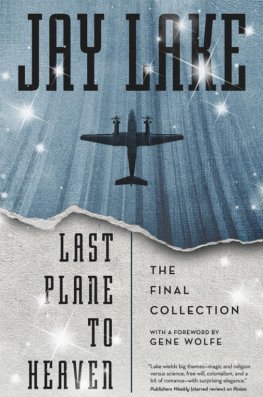



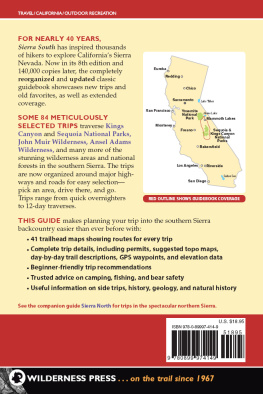

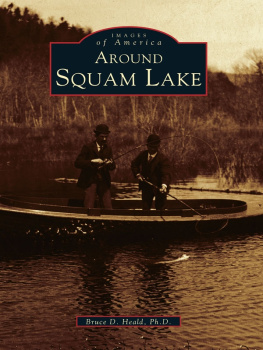
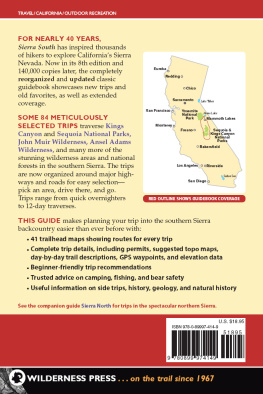
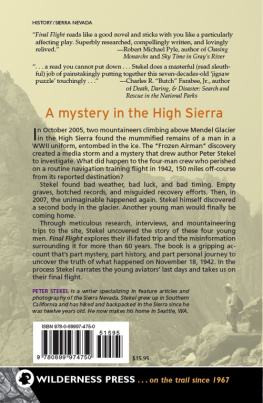


 The paper used in this publication meets the minimum requirements of American National Standard for Information SciencesPermanence of Paper for Printed Library Materials, ANSI/NISO Z39.48-1992.
The paper used in this publication meets the minimum requirements of American National Standard for Information SciencesPermanence of Paper for Printed Library Materials, ANSI/NISO Z39.48-1992.